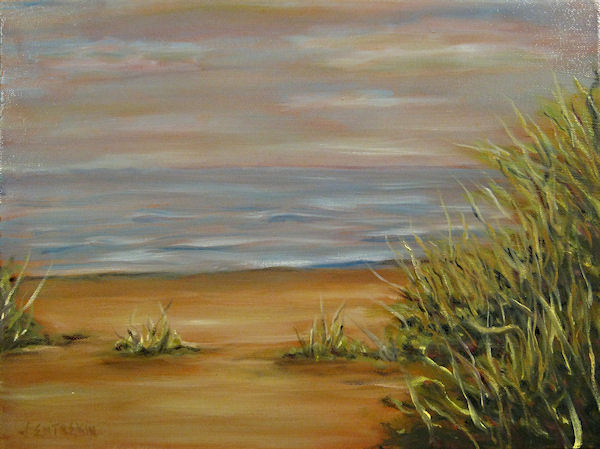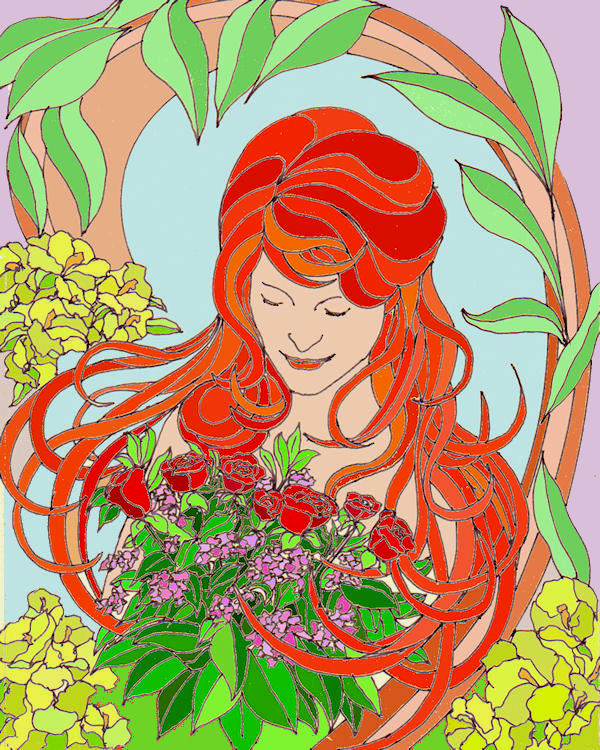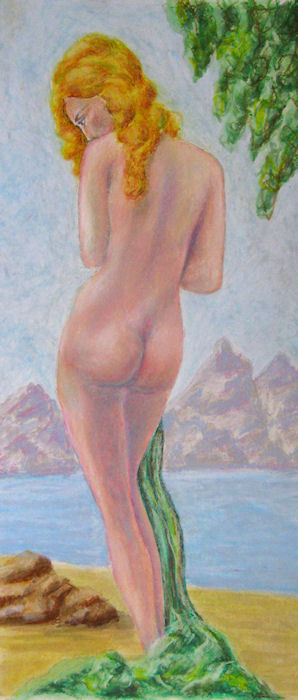|
John's Blog
Saturday, June 04 2016
This is another painting I started some time ago but was never quite right. It is an oil on canvas, 16 x 20 inches. Recently I went back to work on it to give it more color depth and a stronger sense of my swirls. What I am trying to do here is create a sense of nature but avoid realism to, I hope, make the experience as well as the appreciation of nature more intimate. The trees in the forground are evergreens but with colors beyond what nature might have chosen. The trees in the distanct center are very much unnatural yet here I am trying to draw the viewer into the patterning of the overall composition more the depict anything one might see while wandering in the woods. The objects in the forground to the right are nothing like I have ever seen in nature but I think might give the idea of flowers or tall grasses that are fun to observe.
I can still see her in my head when I look at it but do think it is better without her there. More my muse just imagined by me. To view a larger version and pricing information, [click here] Tuesday, May 31 2016
My painting called, "Classic Elegance" was completed a few weeks ago. I've been so busy with new work and teaching art classes it has taken until now to write about how it came to be. It all started about three years ago when I did a sketch of a lady I knew rather well, and loved the poem, "Ode on a Grecian Urn" by Keats. It has also always been one of my favorites. She posed in my studio for it but not in that setting, of course, nor in the gown. Actually her hair wasn't anything like that either. I guess she was the muse who gave me the initial idea. The painting is 36 x 24 inches in oils and was started from various small sketches. I drew the painting on tracing paper and then copied it to the canvas which I had toned with a pale cerulean blue wash. I than did an underpainting in white and cobalt blue. The next day I gave the chair a glaze of purple, the hair darkened with burnt sienna and cobalt blue, and the skin a thin glaze with a pink from cadmium vermillion and naples yellow. The flowers were tinted with a pale cadmium red glaze.
A few months ago I ran across the poem again. I also found myself with a new muse. That made me think of the painting so out it came. By this time I had different colors in my mind and in most of my work. I did drawings of the column and of the urn. I traced them on the painting. I then went at it with the new more vibrant color scheme. I added the background in what might be a simple sort of "Klimt-like" patterning. I added the imagery to the urn as part of the Keat's poem. The part where the two lovers can never complete their kiss but will always have that same longing and antisipation. Love will endure. Most of the painting, after the drawing was done and the new items roughed in with semi-opaque paint, was done with glazes. The figure, always the most important part for me, was done with various layers using my three standard colors for skin, cerulean blue, naples yellow and cadmium vermillion.
Sunday, March 13 2016
The painting above called, "Grandma's Kittens" is one I did several years ago of three kittens sitting in what was my grandmother's favorite rocking chair. It was 20 x 30 inches and done in egg tempera. The painting method of today's discussion. Egg Tempera is a painting medium used throughout art history. It was the primary painting method used from the first century CE to about 1500 when oil painting took center stage. This is a painting medium consisting of colored pigments mixed with a glutinous material such as egg yolk. This isn’t to be confused with the paint called “Tempera Paint” used in school more commonly called “Poster Paint” which is made with different glues and sizes. Egg Tempera, most often called just “Tempera.” is most often painted on hard surfaces such as wood panels or in modern times in such things as untempered Masonite. The origins of tempera painting can be found as far back as on Egyptian sarcophagi. It took over as the medium of choice from “encaustic” painting, (using heated beeswax, more on that some other time) throughout the Byzantine world and Medieval and Early renaissance Europe. Tempera paintings are created by mixing the colored dry pigments with water and then adding small amounts of egg yolk to the mixture. This paint is applied to an absorbent surface. This surface is most often created by coating the panel with a form of “gesso.” This gesso is made by combining chalk or gypsum with a glue, most traditionally a rabbit skin glue to make a brush able thick paint with which to coat the panel. The tempera paint is applied with brushes. The amount of egg yolk used can control the transparency as well as the drying time of the mixture. With the use of just water with the egg it dries very fast. At times something like vinegar or even wine is added to the egg yolk to slow down the drying time. The paint is applied in thin glazes or with small brush strokes since it will dry quickly. Unlike oil paints it cannot be applied in thick passages or with thick oil layers so the colors do not have a deep color saturation and do have a matte finish. The final work is water resistant but not waterproof. Some of the famous painters and paintings done in tempera are: All surviving panel paintings by Michelangelo are in egg tempera. (late 1400’s to early 1500’s)
I have painted may egg tempera paintings. Some are shown here. Mine were done in untempered Masonite with I prepared with the traditional method of home made gesso. I used dry pigments mixed with just enough water to make them a soft paste, and then added small amounts of egg yolk to each painting mixture as I painted with it. I used both glazing techniques as well as small brushes to do a cross hatching to build up depth and paint colors.
Sunday, March 06 2016
This is a continuation of the blog I posted last week. I realized there was just way too much going on around the time Leonardo painted the “Mona Lisa” to not expand on that time period. So here is a bit more: It was in the year 1504 that Michelangelo completed his marble statue of , “David.” The statue stands 17 feet tall. The marble block from which it was carved had a long history of not being worked on, but finally the contract was given to Michelangelo who worked on it for two years. It was in 1505 that Michelangelo was summoned to Rome by Pope Julius II. This started a relationship that lasted 40 years. In1508 he started working on the Sistine Chapel which took four years to complete. He painted it standing up not lying down as some stories tell. It is a fairly well documented fact, Michelangelo and Leonardo didn’t get along. They were completely different types. The fist was a stone mason first who worked long hours alone, and didn’t have many social skills. Leonardo, on the other hand, enjoyed the finer things in life, and even though he was always working and experimenting, he did use his talents to further his position in various courts. The third of what is sometimes called the “Great Trinity” of artists from the High Renaissance period is Raphael. (1483-1520). Even though he died at a young age he left a large body of work, probably because he ran and very large workshop. His masterpiece or best known work is his, “School of Athens” painted between 1509 and 1511. It was painted for the Apostolic Palace in the Vatican. It portrays Philosophy. It is said to portray all the great philosophers from antiquity. However, there is no real way of telling who is who. The only ones known for certain are at the center. They are Aristotle and Plato. There have been many speculations as to the meaning of the positioning and posing of these figures.
Raphael, School of Athens
Michelangelo, Sistine Chapel. Some other things around this time: 1487 - In Mexico the great temple in the Aztec city of Tenochtitlan was dedicated. A ceremony that may have lasted from 4 to 20 days it is speculated as many as 20,000 people were ritually executed by having their hearts sliced from their bodies. From about 1496 until the middle of the 16th century approximately one million people contracted what was called the “French Pox” because it was first seen in French troops stationed in Italy. The disease was actually syphilis. It was most likely brought to Europe by sailors returning from the New World. In literature, Niccolo Machiavelli wrote “The Prince” in 1513. This work has become famous as what some call the first work of modern political philosophy. The essence of his writings is in very simplistic words, “Any methods, no matter how immoral or untruthful, justify the end of winning the post desired.” Playing to the ignorance and fears of the public is a quicker route to success than taking any moral high ground. These writings might be something important to think about during modern elections. 1492 was also the year the Spanish took over Granada in Southern Spain. This ended the near 800 year occupation of Islamic Moorish rule in the Iberian Peninsula. During the Moor’s rule of the city of Granada was famous for its intellectualism and religious tolerance with Arabs, Berbers, Christians and Jews living in separate quarters. With the conquest of the city by Ferdinand and Isabella’s troops this ended. What started was the beginning of the Christian persecution of heretics, namely Muslim and Jews, which became known as the Inquisition. In 1517 the Ottoman Empire was fully established and then controlled the Middle East and Egypt. This gave them control over the “spice route” which was in conflict with the Portuguese. About this time the Portuguese fleet arrived in China with the idea of opening up trade routes. However the Chinese considered the Europeans uncouth barbarians so not much came of the encounters. I think that is enough for today. I’ll be posting more next week about this time. Maybe next week we will look at some of what is known as Byzantine art. When, what, why, how. Sunday, February 28 2016
This post as well as many to follow are going to be a little of art history along with some world history to give the reader an idea of what was going on in the world at the time a famous painting was done. The idea of these posts comes from talking to my students about art, and learning many of them really don’t know what was going on in history around the world at the time paintings were done. I think knowing these things makes for a deeper understanding of the paintings. I think the best painting to start with might as well be the most famous. No, it isn’t one of mine. It is, of course, the Mona Lisa. Leonardo da Vinci painted the Mona Lisa, in 1503 to maybe 1506. (There are always some arguments about these dates as well as some of the other facts but I’ll do my best to go with the majority views.) It is a half-length portrait of a lady named, Lisa del Giocondo and was commissioned by her husband. The name, Mona Lisa, is from the Italian name for what was originally “ma donna” or my lady but was shortened to Mona in time, and most often in Italian as Monna Lisa. It is painted on a wooden (poplar) panel and is about 30 X 21 inches in size. I won’t go into a lot about the painting. That can be found almost anywhere on the Internet. The purpose of this blog is to place it in world history. So what was going on in 1503 or the early part of the 16th century? First it was painted in Florence, Italy even though it has lived most of its life in France, in modern history at the Louvre. This period in Western history is known as the Renaissance which went from the 14th to the 17th centuries. Some think it really started in Italy, Florence in particular, where the Medici family ruled, and promoted all forms of art and science. It was a period of humanism. Scholars studied text from the Greeks, Turks, as well as other from antiquity, and around the known world. Art: Linear perspective, the system for artists to accurately portray nature was invented by Filippo Brunelleschi (1377 –1446) in Florence.
Exploration:
Science: Saturday, February 20 2016
This is a pencil drawing done for a basic drawing class I taught a while back. The idea was to show perspective, with angularity of the basket , It was also an exercise in working with soft lines to show a gentle or subtle change in tone or value. It seemed to work for the class. This was done with on Strathmore sketching paper with a series of graphite pencilss, ranging from 4H, to 4B. It was done from a photo I had found many years ago. This took about four hours to complete. Monday, February 15 2016
Since it is now snowing and very winter I felt it was timely to post a few pen & ink drawings I just found. These were done a while back as illustrations for some book publishers as well as being used for a class in drawing. I have made these into small prints for anyone interested. These were done on a bristol paper with a fine point Sharpie. I first drew the basic shapes with a 6H pencil to create the composition then went to work with the pen. Working in pen and ink this way can be very relaxing and a sort of meditation when there is a great deal of detail. I recommend keeping them sort of small. Big is a lot of work. [grin] These are all around eight inchs on a side or near that. 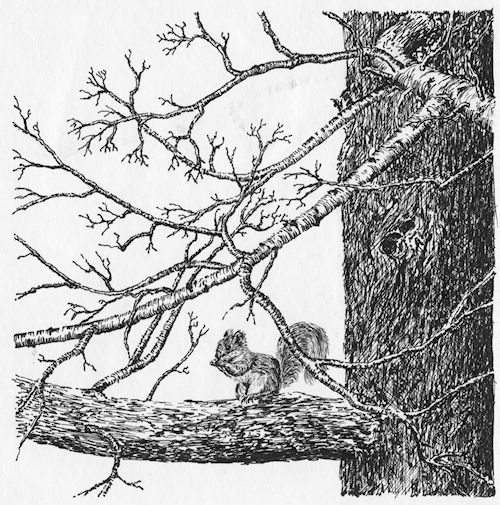 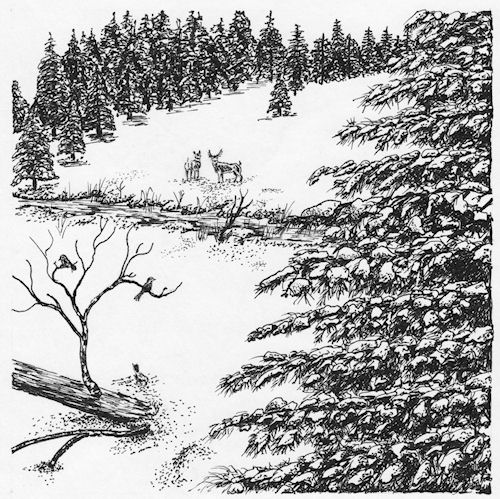 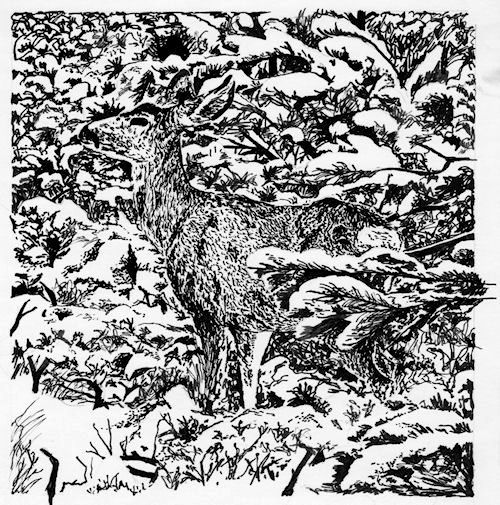 Thursday, December 13 2012
Since I’m planning on visiting Florida in January I decided to do a little preparation by painting a few small works from photos I have taken there in times past or from the mental images I have of those previous trips. What better subject to paint when outside my door it is 22 degrees Fahrenheit and snowing? Wednesday, August 03 2011
This is a small work originall done in pen and ink. It was then scanned and the colors added via the computer. It is the first experiment in what I hope will be many in a sort of "art nouveau" style. I expect I will eventually make this into an oil painting but it was fun doing it this way so I can make many of them experiementing via the computer with different colors. Maybe she should be a blonde.
Tuesday, May 03 2011
This is the second in a series of oil pastels. This is, 17 x 7 inches on museum board.
|
Site Mailing List
Sign Guest Book
View Guest Book
The portraits, paintings, prints and art classes of John Entrekin
John Earl Entrekin
Site designed and managed by Midair-maintence. All content is copyrighted by John Earl Entrekin, 2011
Build your own website
WebStudio Website Builder
WebStudio Website Builder






 Here is maybe the most interesting part. I was stuck with the whole thing at one point. I couldn't see it in my head, and had no idea how to porceed. A good friend of mine reminded me that my work has always seemed to center around beautiful women. She suggested I paint a young lady coming out from behind one of the foreground trees to give the whole composition more meaning to me. I tried it, and almost instantly I could see where to go. I finished the whole painting but then saw that the woman just didn't fit. So, I painted her out. [grin]
Here is maybe the most interesting part. I was stuck with the whole thing at one point. I couldn't see it in my head, and had no idea how to porceed. A good friend of mine reminded me that my work has always seemed to center around beautiful women. She suggested I paint a young lady coming out from behind one of the foreground trees to give the whole composition more meaning to me. I tried it, and almost instantly I could see where to go. I finished the whole painting but then saw that the woman just didn't fit. So, I painted her out. [grin]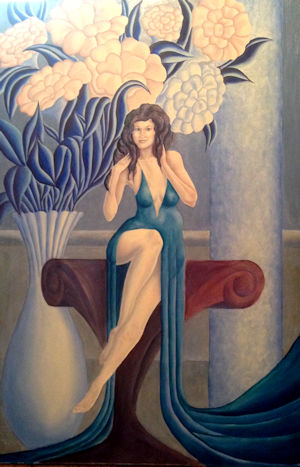 All this was done a few years ago. I didn't know how I wanted to proceed. Besides, I wasn't seeing the lady any more. [grin] So, I put it aside, and sort of forgot about it.
All this was done a few years ago. I didn't know how I wanted to proceed. Besides, I wasn't seeing the lady any more. [grin] So, I put it aside, and sort of forgot about it. 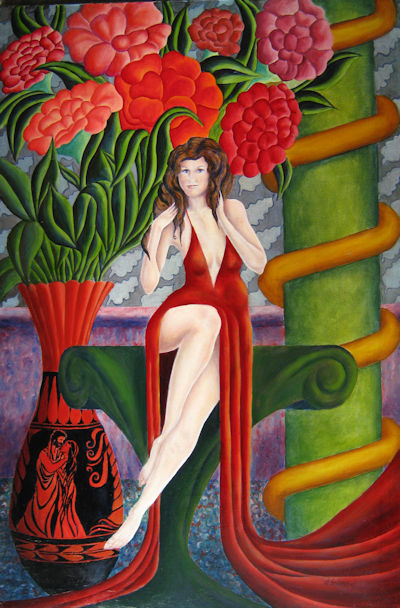
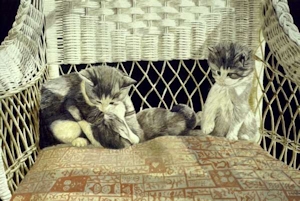
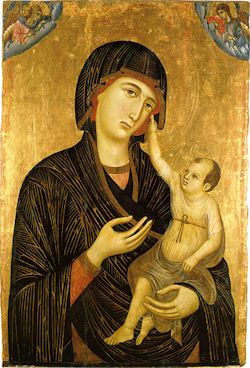
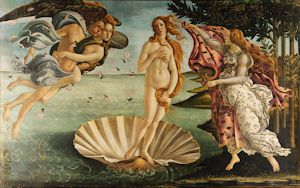
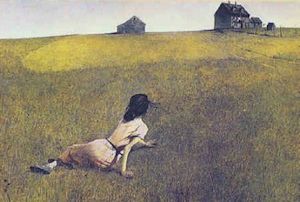
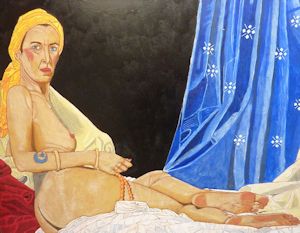

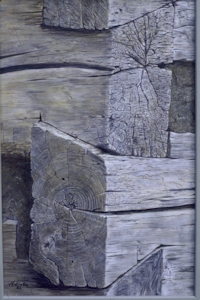
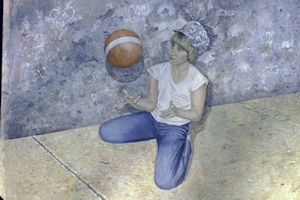
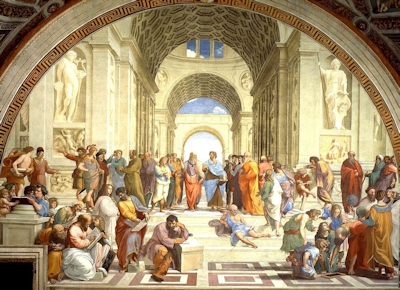
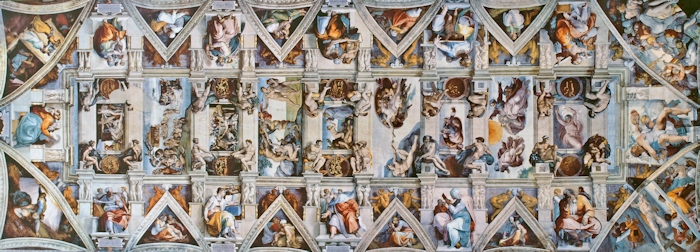
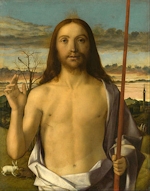
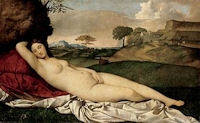
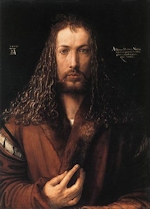
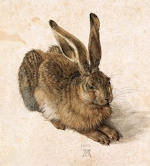
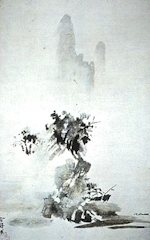
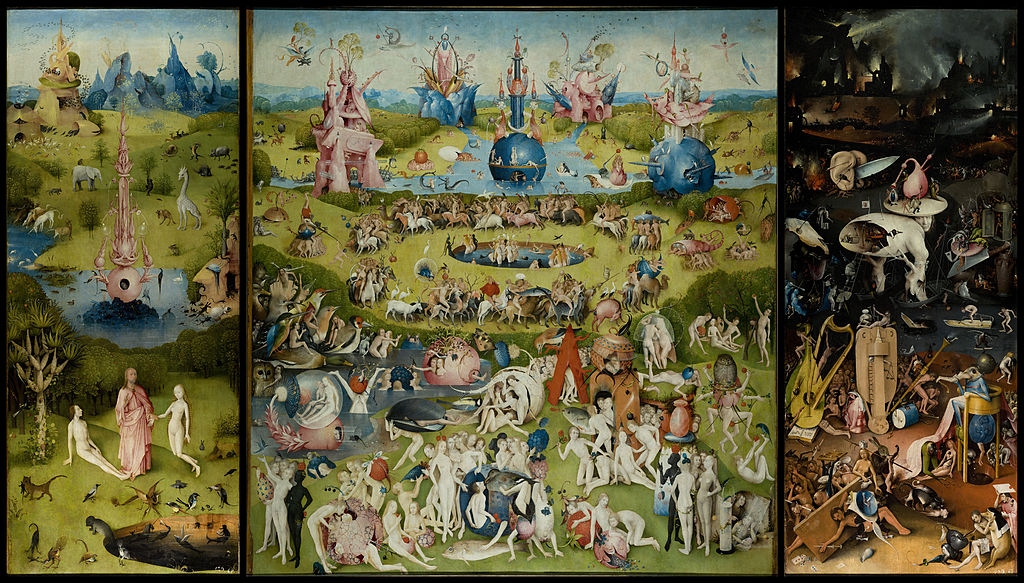
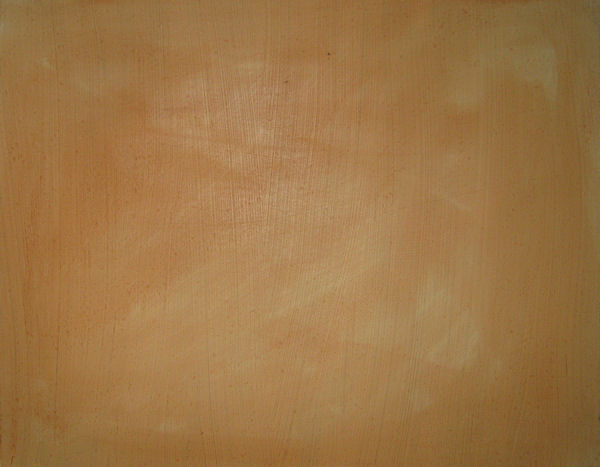 This first one is completely from my imagination. It reminds me of the times spent on the beaches of the northeastern coast of Florida. I started with a small canvas, 12 x 16 inches that had been primed with a few coats of gesso and then toned with a thin wash of burnt sienna. This is a very normal way for me to begin an oil painting except in figure work I spend much more time on ground preparation to get a smoother surface. I very seldom will sit down and start with a white canvas. Painting first a toned ground in something such as burnt sienna or raw sienna gives a slight warm color over which I can paint with initial lights and darks to create a value pattern right from the start. I also prefer the warm glow this gives to the final work. At times I do something different but that is for another discussion.
This first one is completely from my imagination. It reminds me of the times spent on the beaches of the northeastern coast of Florida. I started with a small canvas, 12 x 16 inches that had been primed with a few coats of gesso and then toned with a thin wash of burnt sienna. This is a very normal way for me to begin an oil painting except in figure work I spend much more time on ground preparation to get a smoother surface. I very seldom will sit down and start with a white canvas. Painting first a toned ground in something such as burnt sienna or raw sienna gives a slight warm color over which I can paint with initial lights and darks to create a value pattern right from the start. I also prefer the warm glow this gives to the final work. At times I do something different but that is for another discussion.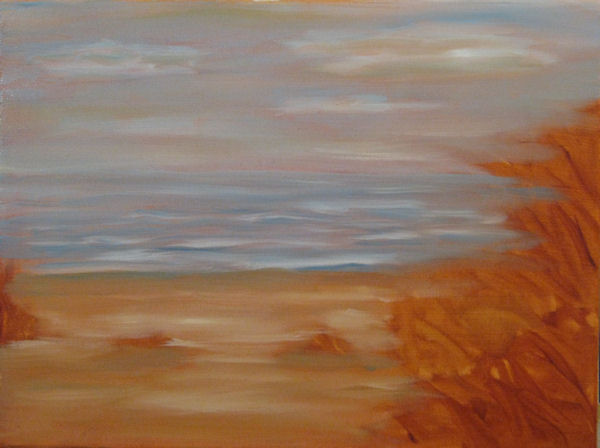 I don’t show any drawing here because there was none. I started in with a mixture of white, cerulean blue and a touch of yellow ochre to paint the sky wet into wet using one flat brush with long horizontal brushstrokes. Working wet in wet in this way I can get a smooth and misty look to the sky with a hint of clouds. The water at this stage was done with the same colors and technique. A little burnt sienna was used to sort of rough in the weeds to the right and some of the same with white was used to give the beach some definition.
I don’t show any drawing here because there was none. I started in with a mixture of white, cerulean blue and a touch of yellow ochre to paint the sky wet into wet using one flat brush with long horizontal brushstrokes. Working wet in wet in this way I can get a smooth and misty look to the sky with a hint of clouds. The water at this stage was done with the same colors and technique. A little burnt sienna was used to sort of rough in the weeds to the right and some of the same with white was used to give the beach some definition.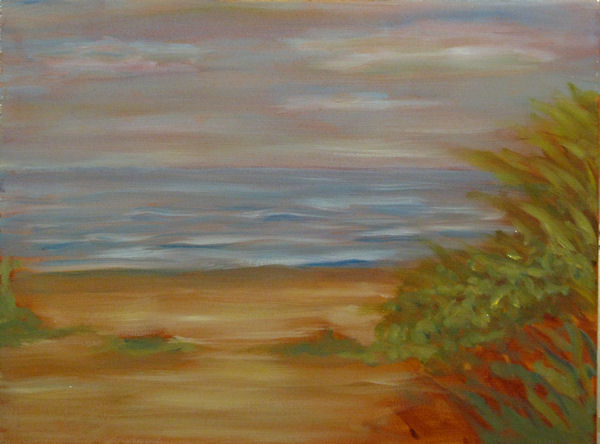
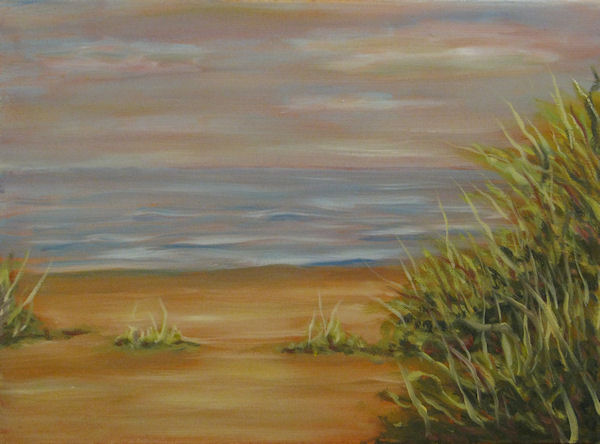 In the next stage most of the work was done on the weeds. Using the same colors as I mentioned earlier I just kept adding more dark spots near the bases and longer strokes with a thin sable brush for the long weeds. I was shifting colors around constantly to keep things from getting boring to the eye.
In the next stage most of the work was done on the weeds. Using the same colors as I mentioned earlier I just kept adding more dark spots near the bases and longer strokes with a thin sable brush for the long weeds. I was shifting colors around constantly to keep things from getting boring to the eye.